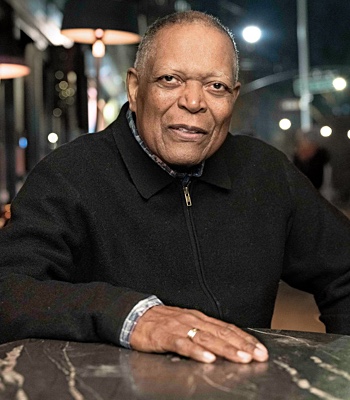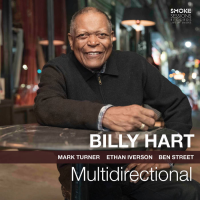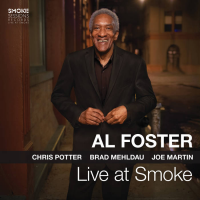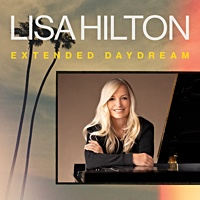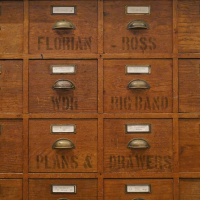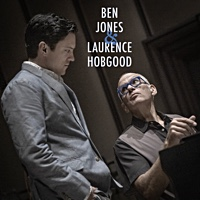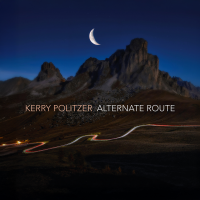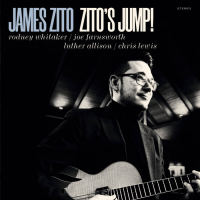Home » Member Page
Joanna Grammon
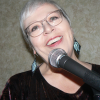 About Me
About Me
My Jazz Story
After singing gospel harmonies by ear during childhood, a $15 pawnshop arched-top guitar was all it took to begin singing folk and
original songs in public. In California, coffeehouses and clubs paid $15-$35 per night. It was a hard-scrabble existence, including a
couple of years as a busker at The Cannery and Ghiardelli Square in San Francisco —- and at ritzy Aspen ski resorts with a New
Orleans piano player and a group of talented horn players. One night as the solo folk act in San Jose, Calif. nightclub, she
followed a flamenco troupe and opened for the Gollywogs, who unfurled a banner that night to become Creedence Clearwater
Revival. Singing with a psychedelic rock/blues band, Natty Bumppo, she left San Francisco and traveled to Washington, D.C., where
they were the house band at the Showboat, a blues, rock and R&B nightclub owned by Charlie Byrd. The band had opened two
weeks for the Jimi Hendrix Experience, an experience from which they never recovered.
Singing with the Buffalo Head Nickel Jug Band in Los Angeles and the Bay Area was her exposure to early blues and jazz.
An experimental band formed in the Northwest in the early 1970s, which later became known as Upepo, a 9- to 11-piece band
that played improvisational music and Latin and Middle Eastern sounds that would now be described as world music. The
Portland-based group played from British Columbia to Northern California; she was with them three and one-half years. They sold
out a multimedia show two years in a row in a 1,500-seat theater and took the show on the road, with a dance troupe, belly
dancers, mimes, and a light show. From July through September, 1975, she toured with a show band, Cat's Cradle, traveling 6,000
miles, playing in clubs and restaurants from Mississippi River towns to Massachusetts and back, with a blend of R&B, jazz, pre-rap
funk and blues. Back in the Bay Area, in collaboration with saxophonist Joe Henderson, several of his compositions were set to
music with lyrics for the first time. Berkeley pianist and composer G. Francis M'Lely wrote a jazz musical, "And All That Jazz,"
(written prior to Bob Fosse's vehicle with a similar name), which had a six-week run at the Phoenix Theater on San Francisco's
Broadway, with reviews in the San Francisco Chronicle and the Examiner.
Moving to New York in 1978, she began a three- and four-night a week gig at a legendary Harlem nightspot, the Red Rooster,
which continued more than six months with leader/trumpeter Bucky Thorpe; the mercurial Don Pullen, who played B-3 on the gig
but was best known for his years on piano with Charles Mingus; drummer Bobby Battle; and guitar phenomenon Roland Prince,
who left to tour Europe with drummer Elvin Jones and was replaced by the late Ted Dunbar. She was the only white face in the club
most nights; it was owned by a black numbers banker putting his club-manager daughter through law school. The crab cakes were
excellent.
In New York, she also worked with veteran bassist Herman Wright (Archie Shepp, Chet Baker), pianist Paul Hastil, guitarist Dan
Licht and drummer Tony Moreno, a protégé of Elvin Jones, in club gigs around N.Y.C., New Jersey and Massachusetts, and
occasional concert and college dates. For more than a year, she rehearsed with Joy Spring, doing four-voice harmony and scat lyrics,
who recorded a demo with pianist/composer Walter Bishop. For three years, she also rehearsed and sang with the Barry Harris
Chorus in annual concerts with his big band and orchestra, including a "Tribute to Thelonius Monk" at Town Hall and two sold-out
dates at Symphony Space —- during a transit strike. She sang in a number of black churches in concert as part of an old-time
gospel
choir conducted by Professor Edward Boatner, Sonny Stitt's dad. On May 6, 1984, she was one of the voices in a performance of
conductor/composer Coleridge Taylor Perkinson's demanding works, "Fredome-Freedom" and "The Legacy," at St. Peters Church in
Manhattan. On Sept. 9, 1984, she was one several "American Song Stylists" at St. Peter's with performers including Shirley Horn;
each singer had their own segment on the program, which was produced by Steve Getz, Stan Getz' son.
For more than five years while in New York, she worked for United Entertainment Complex, a booking agency representing artists
including McCoy Tyner, Max Roach, Ornette Coleman, Ahmad Jamal, Yusef Lateef, Spyro Gyra and the Blackbyrds. She also booked
and road-managed a winter tour of eastern Canada for the Mingus Dynasty. She was a friend to a number of jazz greats, including
Papa Jo Jones, whom she cared for, and Miles Davis, with whom she hung out for several months from Labor Day 1979 into early
1980.
She returned to the Northwest in early 1985 after buying a small piece of property in the woods of the Columbia River Gorge, and
became a reporter, then managing editor of a weekly newspaper, retiring in 2013. She writes lyrics and records in her home studio,
and performs in duos and trios, most recently with guitarist Jay Reed and pianist Harrison Richter.

